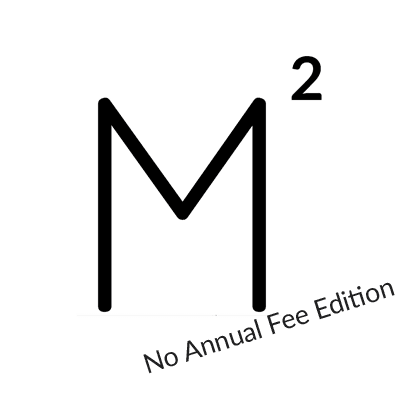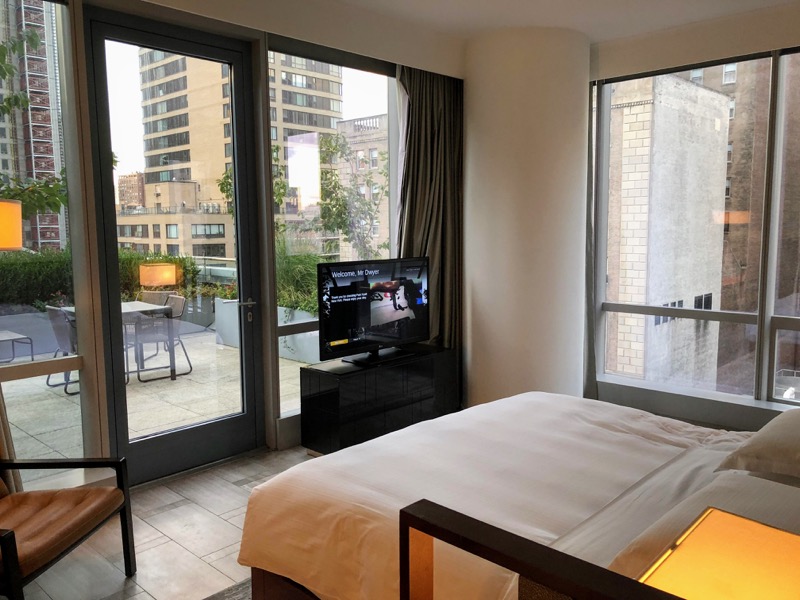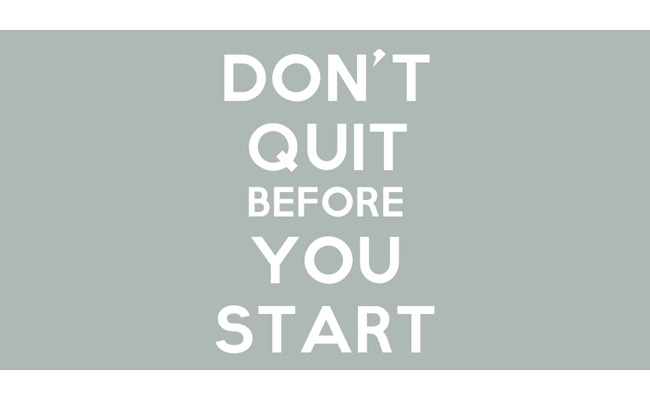
If you’re like me, your friends and family think you have a bunch of points & miles from frequent business travel.
But if you’re a Milenomic you realize that points & miles are just tools we use for deeply discounted travel. And business travel, even when it’s reimbursed, is one of the most unpleasant ways to accrue miles.
True road warriors and corporate executives are often afforded certain privileges that make frequent business travel more tolerable. Many companies allow those who travel many times a year to book business class or better. And truly frequent business travelers have high level status, earned the hard way, that sometimes gets them upgrades. But what about the rest of us? Those caught in the unfortunate chasm between “never have to travel for work” and “I fly for work so much I’ve got more miles than I know what to do with”?
Today’s post is aimed at those of us who fly 2-10 times a year for work and are looking for a little dignity along the way.
Here are six ways to soften the edges of travel – even if you don’t fly a ton.
1. TSA Precheck
The first kick in the pants of the travel experience generally starts at security. Even if I come in with a positive attitude and the lines for security are mercifully short I feel like I’ve been put through the ringer once I take off my shoes, remove my laptop and liquids from my bag, and limp through the process.
With TSA Precheck, lines are generally shorter and you skip much of the rigamarole.
Most people get TSA Precheck by way of Global Entry since Global Entry costs just a little more ($100 vs $85) and helps speed re-entry when traveling internationally. The biggest hassle with getting Global Entry is the interview, which can takes months to schedule in some cities. So it’s best to get that behind you sooner rather than later.
The best way to pay for Global Entry is…to get someone else to pay for it. Many credit cards include a $100 Global Entry credit (here’s a partial list from the TSA of all people). You’re likely have at least one card in your arsenal that reimburses Global Entry. And if you don’t, find a friend who has extra credits to use on their card to pay your fee.
2. Get credit cards with lounge access
Lounge access is one of those things that seems like a superfluous waste of money but when you’ve got a lengthy delay, could use the assistance of an airline agent for a schedule change, or just like hanging out in a more pleasant environment than the terminal, lounges can really take the edge off travel.
Many of the credit cards that come with Global Entry reimbursement also offer Priority Pass lounge access. Priority Pass does not get you in to major carrier lounges but it does get you into a somewhat rag tag but occasionally useful collection of independent lounges (here’s a list of their locations). The utility of this varies wildly depending on your travel patterns. For example, if you fly JetBlue out of Boston frequently there’s a Priority Pass lounge in Terminal C that’s well positioned.
If your home airport(s) are well served by Delta, the AmEx Platinum cards come with Delta SkyClub access. You can’t bring guests, and it’s only useful when traveling on Delta that day, but if that fits your needs it’s a nice benefit. It may not be worth the $450-$550 annual fee some flavors of the AmEx Platinum card charge but if you’re working through the first year of an AmEx Platinum card with a signup bonus lounge access can be enjoyable. There are many types of AmEx Platinum cards: Personal, Business, Mercedes-Benz, and Schwab for example. And don’t forget the Ameriprise version of the card. No signup bonus, don’t have to be an Ameriprise customer, no annual fee the first year, and you can get the card (for its benefits, with no annual fee) again and again.
Each of the major carriers offers a co-branded card with lounge access. I cant justify these fees in my mind. But one weird angle I was able to justify was the full-fledged Delta SkyClub access the Merrill+ card kicks off when spending $50,000 on the card annually. This enables me to bring colleagues and/or my family to the lounge.
3. Carry a co-branded credit card for the largest carrier(s) in your hometown
Each of the major carriers offers a co-branded card that offer “priority” boarding. The priority with which you board is sometimes comically deep in the boarding order (the last 25% or so of people boarding a United flight must be like “what the heck is going on here?”) but often makes the difference between finding space in the overhead bin vs getting your bag gate checked. So getting some kind of leg up on your fellow travelers is a useful matter of self-preservation.
The fees on these cards can be justified by the signup bonus the first year. But after that, it gets more challenging. Seek retention bonuses that get you close to break even. Eventually you’ll have to make the call whether it’s worth it for your situation. If not, cancel the card, endure the pain for a while, and sign up for the card again if it is churnable.
4. Gin up airline status through spend
Two programs come to mind here: Delta and JetBlue.
Delta’s AmEx Platinum ($175) and Reserve cards ($450 but includes limited SkyClub access) earn status-qualifying miles for spend. If you’re in a position to run quite a bit of money through credit cards -and- you live in a town that’s either captive to or well-served by Delta, it might be worth doing the math to see whether it’s worth it.
Another airline that lets you earn status without setting foot on a plane is JetBlue. Spending $50k on their co-branded card gets you JetBlue Mosaic status, their top level of status (also: their only level of status). This can be great for those living in JetBlue towns.
Earning status through spend is definitely not a Milenomics kind of thing to do. The opportunity cost is formidable. But as much as we say Be Your Own Elite around here, we’re even more interested in encouraging each other to analyze situations and see what makes sense for us.
5. Get rental car status through credit cards
The move here is to usually to attain status with National, Hertz, or Avis through the AmEx Platinum -or- any World Elite Mastercard. Then match that status to your rental car company of choice.
In my experience, it doesn’t meaningfully impact the rental experience, but it can mean you pick from a slightly better bucket of cars at the airport. And you earn rental car loyalty points at a higher rate.
So while you’re driving that Chevy Cobalt on a work trip you’ll be dreaming of the convertible you’ll be renting while on vacation in Hawaii with points. Or that pricey minivan while on vacation in Florida. Again, whatever works for you.
If you travel by car on your business trips, you may want to look at the website of a vehicle transportation company that can get your car where it needs to be so you can still drive your car in that destination but avoid the stress of the long drive.
6. Attain “easy” hotel status through credit cards
I was chatting with my sister the other day and asked if she had any hotel status? She said “no”.
Turns out, she has more status – or could have more status than she realizes.
She has an AmEx Platinum card which gets her SPG Gold which matches instantly to Marriott Gold which is also good for free breakfast when staying at many Marriott hotels. Courtyards are excluded, but I think this is smart on their part. When you’re on a business trip you’re most likely on expense account, so what sense does it make to give business travelers a free breakfast? Better to use that revenue towards funding the free breakfast benefit at other hotels in the chain.
She also had an AmEx Hilton Ascend which was a forced product change from an AmEx Hilton Surpass card. That comes with Hilton Gold which gives you free breakfast at most Hiltons including Conrad and Waldorf Astoria properties.
The single best thing about hotel status in my view is accelerated point earning. Because you can count on it.
On the other hand, space available upgrades are the most overrated benefit in the loyalty industry. Because there never seems to be space available.
Bottom Line
I’m far more likely to find myself flying in Economy on a work trip than when traveling for leisure. That being the case I like to find ways to make business travel a little more tolerable. Hopefully some of these tips can help you in your travels, whether they be for work or pleasure.
What tips and tricks would you add?





Spot on about the lack of value in Priority Pass:
“Priority Pass does not get you in to major carrier lounges but it does get you into a somewhat rag tag but occasionally useful collection of independent lounges.”
My tips, as one who travels for work only 10-12 times a year:
1. Use the AMEX Platinum airline credit to buy lounge access (other than Delta) when you really need it. American and United both sell day passes. You may only need this 3 or 4 times a year when there’s a long delay. But it can definitely be worth it when things go bad.
2. Consider buying up. Lately, Delta and United have been selling last-minute upgrades to First starting for as little as $40. On a transcon, it’s worth $40 of my own unreimbursed money to fly upfront. Others may not feel that way.
3. If you stay in the same hotels repeatedly, befriend the people at the front desk. This has helped me get more “space available” upgrades than my status.
4. You can pay a fee to link your corporate AMEX spend to your personal Membership Rewards points. If you travel 10 times a year to major cities, this can really add up.
5. If you dine in hotel restaurants, always put the bill on your room rather than ringing up a separate receipt. If you have status with the hotel chain, you’ll earn points on those dollars at an accelerated rate.
Great stuff Michael.
I especially like the point about spending just a bit of your own un-reimbursed money for an upgrade. It seems like a wasteful splurge (you’re on a work trip!) but it’s your life so why not take the edge off if the numbers are reasonable? For both personal and leisure travel it really pays to keep an eye out for situations where the spread between Economy and First is small rather than hoping for an upgrade.